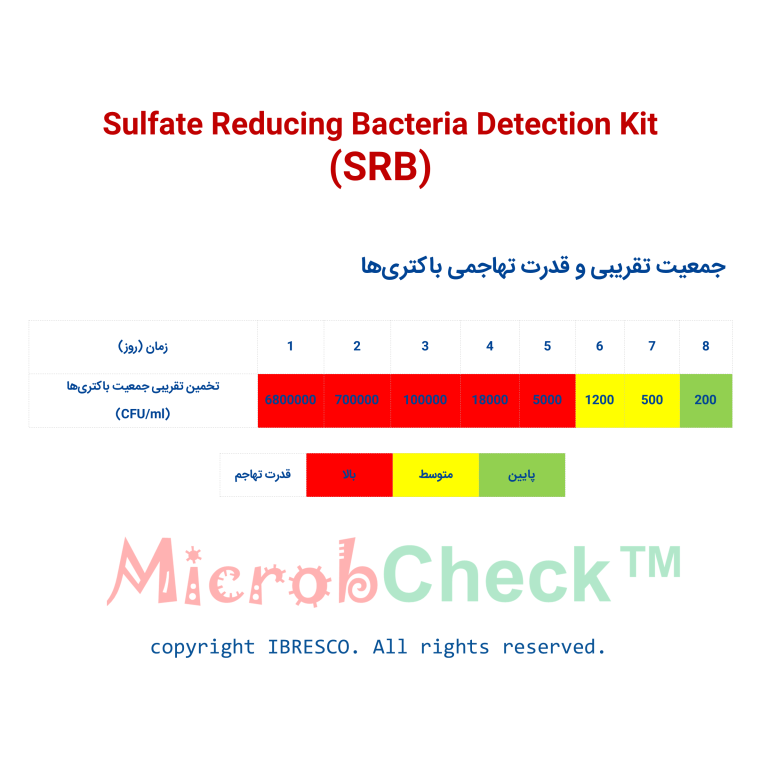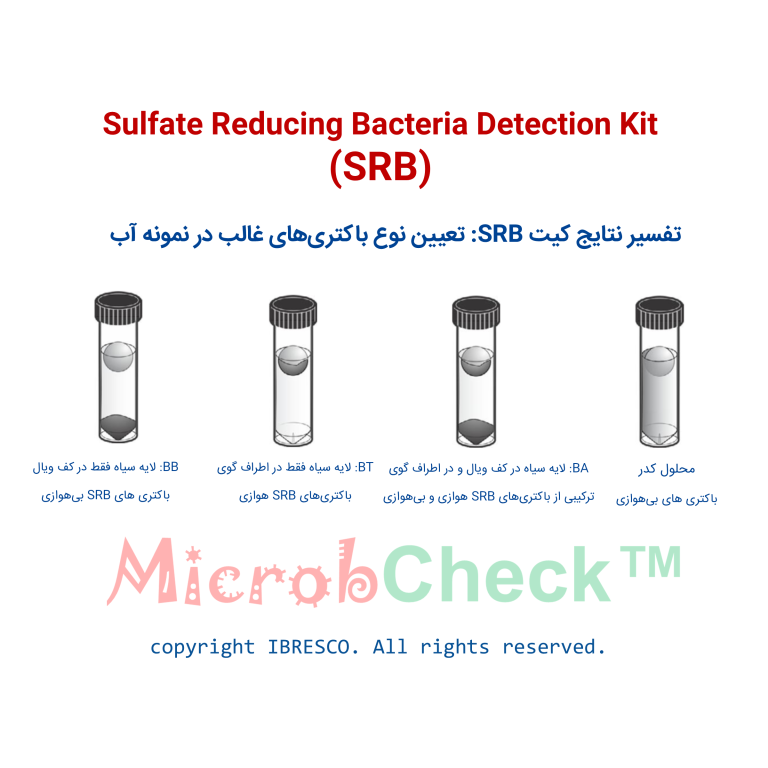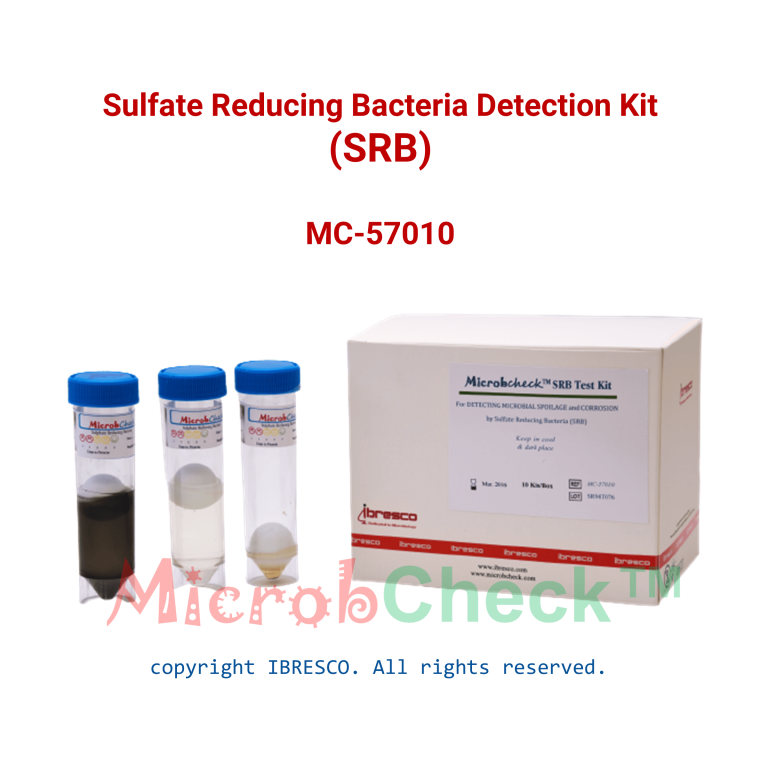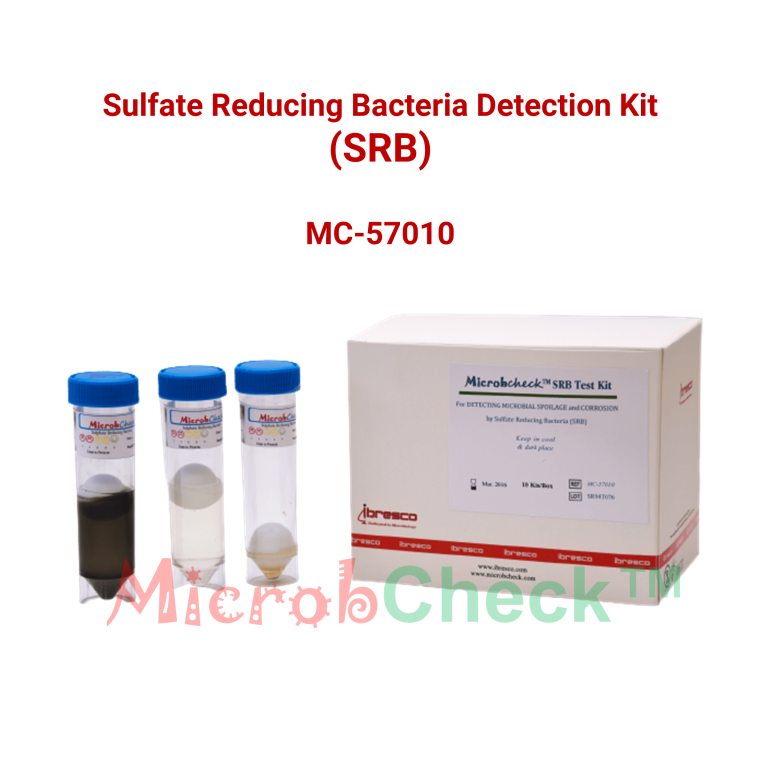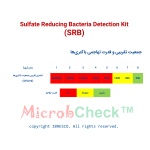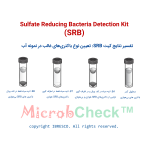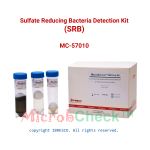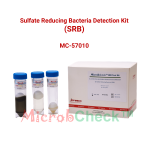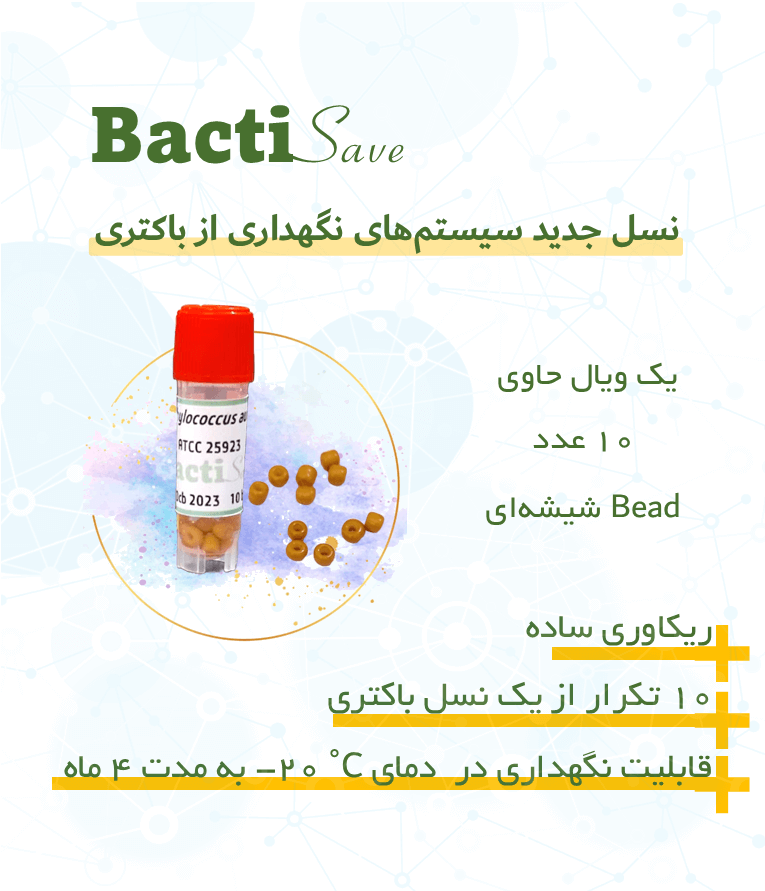توضیحات
Sulfate-reducing bacteria (SRB) are a group of anaerobic bacteria that produce hydrogen sulfide. These bacteria cause fundamental problems from the smell of rotten eggs to the blackening of equipment, water, and the formation of sludge, as well as initiating the corrosion process. One of the most important factors in corrosion in the oil and gas industry is corrosion caused by hydrogen sulfide gas. Many oil and gas installations are made of carbon steel and are sensitive to corrosion with hydrogen sulfide gas, which causes various types of corrosion in these steels. The detection of these microorganisms is challenging due to their anaerobic nature, tendency to grow in biofilms, and slow growth in conventional media. The SRB MicrobeCheck Kit, with its unique and modified formulation based on the reference standards of NACE and API, has reduced the time required for identification of SRB bacteria with increased accuracy and ease of identification.
Test
Test
Manufacturer’s recommendation:
- Avoid contacting the inner wall of the Falcon tube and its lid. Perform the test under sterile conditions.
- After opening the Falcon tube, invert the lid so that the bottom faces the ground and place it on a clean surface.
- Sulfate-reducing bacteria do not grow directly in water but rather grow in the depths and in biofilms. Make sure to take the sample from an appropriate site.
Water sampling method:
- Collect at least 25 milliliters of sample.
- Pour 19 mL of the sample (up to the marked line on the Falcon) into the Falcon and leave it there.
Soil Sampling Method:
- Transfer one gram of the desired soil sample to the laboratory at a temperature of 4-15 degrees Celsius. Dissolve the sample in 20 milliliters of sterile water and vortex.
- Note: For tests that must be performed on-site and there is no possibility of preparing a suspension, add one gram of soil directly to the kit and add up to 20 milliliters of sterile water.
Test
- After preparing the sample, do not shake or rotate the falcon. Allow the ball to float on the liquid surface.
- Write the date and name of the sample on the falcon.
- Warm the falcon at room temperature (21-25 degrees Celsius) and away from sunlight.
- Observe the sample every day for 8 days. Note the date of the first observed reaction.
- If the reaction is negative, keep the sample until the 14th day and check it daily.
Interference:
The presence of more than 20 ppm of hydrogen sulfide in the sample will result in a false positive result. To remove hydrogen from the sample, pour 30 milliliters of the sample into a tube, close the lid, and shake for 10 seconds. Then let the tube stand for 20 seconds. After that, you can use this sample for testing.
results interpretation
results interpretation
Presence/Absence:
If there are sulfate-reducing bacteria present in the sample, after heating, a black sediment will form at the bottom of the tube. A black, slimy ring around the coil or black slime at the bottom of the tube is formed due to bacterial growth. Results can be interpreted based on the type of bacterial growth in the Falcon.
Reaction Patterns:
There are three reaction patterns in the MicrobCheck SRB kit that are considered positive results for SRB bacteria. These three patterns are as follows:
- BB (blackening of the vial bottom); This reaction is detectable by the formation of a black color on the bottom of the vial. The blackening usually starts in a small area and gradually spreads. In this case, the liquid medium should be clear and there should be no slimy ring around the floating coil.
- BT (blackening around the ball); a sludge ring and black sections are observed around the float. In this case, blackening, not just the presence of sludge, is the hallmark of the presence of SRB. The created sludge is usually white, gray, beige, or yellow and is formed mostly in the upper part of the ball. The blackening process also often begins with small dots and gradually expands into pieces between the sludge.
- BA (a combination of BB and BT); in this reaction, both BB and BT states are formed. Blackening occurs both on the vial bottom and around the ball. In this case, the interval between these two blackened areas may not be clear. Under exceptional circumstances, blackening may occur in the MicrobCheck SRB vial. Very quickly start (in less than half an hour). In such cases, the sample under investigation may already contain some hydrogen sulfide which reacts immediately with the iron present in the vial. If such an event occurs, it is recommended to shake the water sample under sterile conditions before performing the MicrobCheck SRB test kit to release the hydrogen sulfide gas in it.
Two other types of reactions may also occur in the MicrobCheck SRB kit that, although they do not indicate the presence of SRB, are valuable as they can provide a better view of microbial activities in the MicrobCheck SRB vial . These two reactions are as follows:
- Gas bubbles that are sometimes seen on the first or second day of warming in the MicrobCheck SRB vial . By gently tapping the test vial, these bubbles move from the bottom of the vial and quickly reach the floating ball. It appears that this gas is methane produced by methane-producing bacteria that grow in severely anoxic conditions at the bottom of the vial.
- Cloudy Gel-Like (CG) is usually observed before the BB or BT reaction and in most cases is seen initially in the lower half of the vial. Such a phenomenon indicates the presence and activity of a significant population of anaerobic bacteria in the sample. This population is usually seen as a gel-like cloudy mass in the lower third of the vial. The cloud formed by the growth of these bacteria may cause the medium to become turbid. Although this phenomenon is not considered a positive indication of the presence of SRB, it is a sign of the presence of invasive anaerobic bacteria in the sample, which in many cases will ultimately result in a positive SRB reaction (BT and BB).
Bacterial Count Estimation:
If the test result is positive, you can estimate the bacterial population and the level of invasion according to the guide table. The reaction occurs faster when the bacterial population is high.




